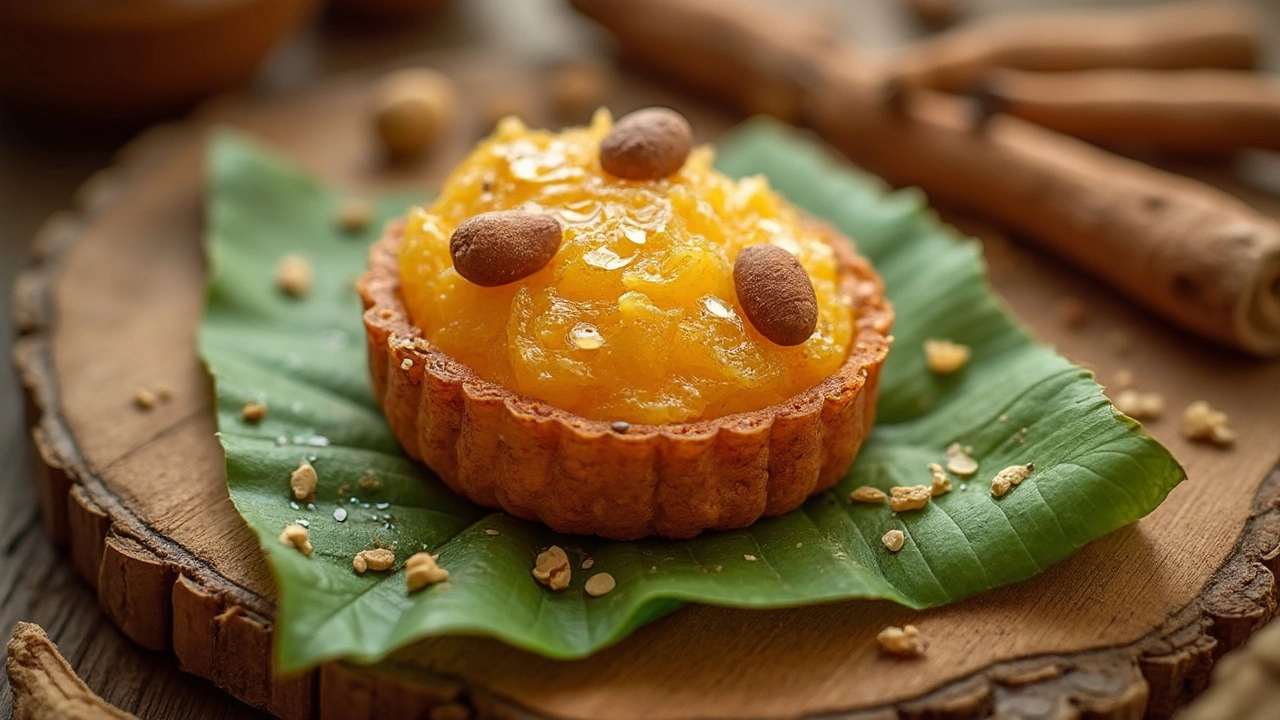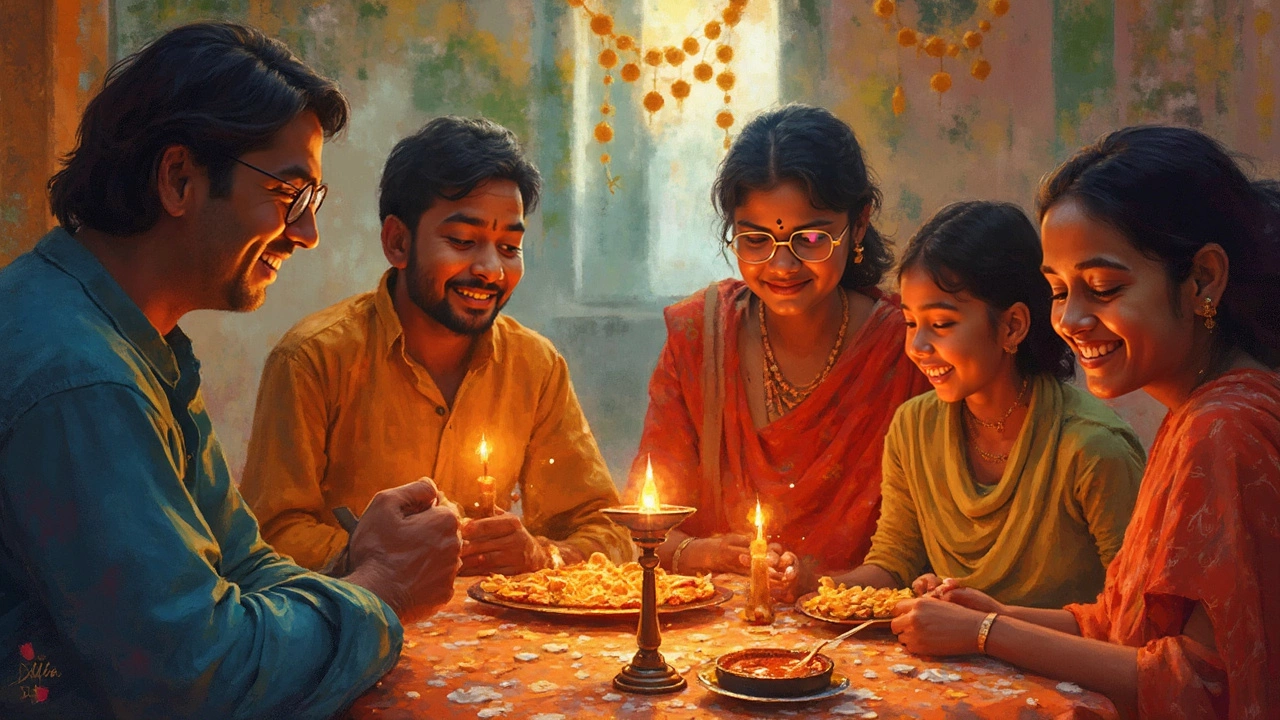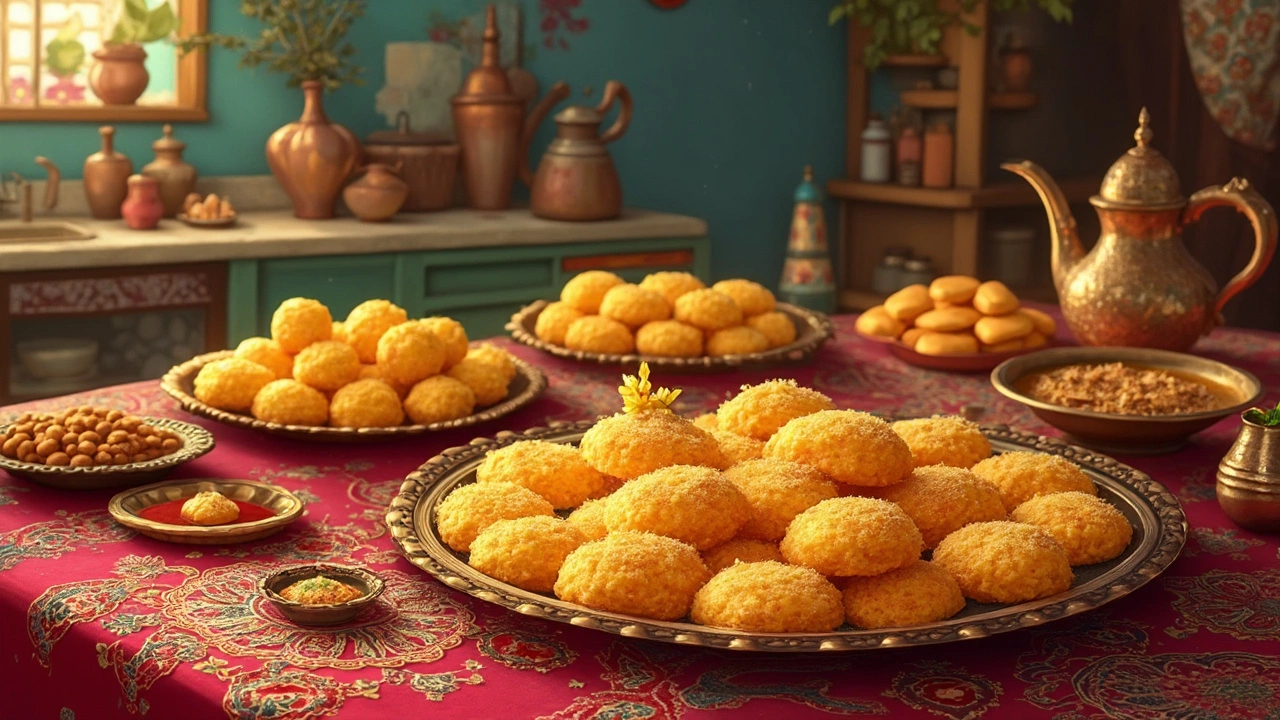The traditional sweet of Gujarat that often steals the spotlight is none other than 'Ghari'. This sweet is deeply rooted in Gujarati tradition and is especially popular in the city of Surat. If you've never tried it, imagine a delightful round treat filled with a rich mixture of pistachios, almonds, and sometimes fragrant spices like cardamom. These are wrapped in a thin sheet of dough and then fried until golden. To top it off, they’re often coated with ghee and sometimes a dusting of sugar. Yum, right?
So, what makes Ghari so special in Gujarat? It's not just about the taste. Ghari is deeply tied to cultural practices and festive celebrations. People prepare Ghari during special occasions like Chandani Padwa, when families gather to enjoy this sweet as they celebrate good times together. You might even say that having Ghari marks a moment of happiness and bonding in Gujarati households.
- Introduction to Gujarati Sweets
- Cultural Significance
- Ingredients and Preparation
- Celebratory Occasions
- Modern Variations
Introduction to Gujarati Sweets
Gujarat is famous for its unique, flavorful cuisine, and sweets play a big part in that. You know how sometimes you crave something sweet after a meal? Well, in Gujarat, they've turned this craving into an art form. From the bustling kitchens of homes to the crowded stalls in local markets, Gujarati sweets are everywhere.
The sweet scene in Gujarat is diverse. You've got everything from Ladoo that melt in your mouth to Fafda Jalebi, which is a delightful mix of crispy and syrupy textures. And let’s not even get started on Mohanthal, a fudgy dessert flavored with ghee and cardamom.
Regional Specialties
Every region in Gujarat takes pride in its specialty. Surat, for instance, boasts the famous Ghari, while the city of Ahmedabad might tempt you with its Shrikhand—a creamy dessert made from strained yogurt and flavored with saffron and nuts. In fact, the variety of sweets is so vast that you could travel through Gujarat just for the desserts!
Why Sweets Matter
Sweets in Gujarat are more than just sugar and spice; they carry cultural significance. They're made with love and shared during festivals, birthdays, and even just casual get-togethers. Because here’s the thing: it's not a real celebration without a sweet ending. In many ways, Gujarati sweets are a sweet way to connect with people and share happiness.
Gujarati culture food has this amazing ability to turn simple ingredients into something extraordinary. Whether you're a local or a visitor, you should definitely try some when you get the chance!
Cultural Significance
In the vibrant state of Gujarat, Ghari is more than just a dessert; it’s a piece of heritage. This traditional sweet, with its rich flavors and unique preparation, has been a staple in Gujarat’s celebrations for ages. One can't deny that it's intertwined with the state’s identity.
Ghari is especially synonymous with the festive spirit of 'Chandani Padwa', a day that marks the end of the Gujarati New Year celebrations. Families come together to indulge in this sweet during the night as they embrace the celestial beauty of the full moon. It's believed that enjoying Ghari under the moon signifies prosperity and happiness.
Historically, Ghari was also consumed by warriors before going into battle, thanks to its energy-packed ingredients. This rooted it as not just a treat but a source of strength. Over time, Ghari has become associated with various other festivities and occasions. In weddings and religious ceremonies, it symbolizes the sweetness of future prospects and good fortune.
Through the years, Ghari has remained unchanged in its essence, with Surat being the undisputed Ghari capital. Here, it’s not uncommon to see queues outside famous sweet shops during festive times, proving the enduring love Gujaratis have for their beloved sweet.

Ingredients and Preparation
Making Gujarat's traditional sweet, Ghari, at home is easier than you might think. The ingredients are simple, yet when they come together, they create a delightful treat that carries the essence of Gujarati culture.
Ingredients You'll Need
- Wheat flour - 2 cups
- Pistachios and almonds, finely chopped - 1 cup
- Cardamom powder - 1 teaspoon
- Ghee - 1 cup, plus extra for frying
- Sugar - 1 cup
- Milk - 1 cup
- Optional: a pinch of saffron for extra flavor
Step-by-step Preparation
Ready to make some authentic Ghari? Here's how you do it:
- Prepare the filling: Start by combining the pistachios, almonds, and cardamom powder. If using saffron, mix it in a teaspoon of milk first and then add it in. Mix well.
- Make the dough: In a bowl, mix the wheat flour with a little ghee and sufficient milk to form a soft dough. Let it rest for about 30 minutes.
- Shape your Ghari: Divide the dough into small balls. Roll each ball into a small circle, place a spoonful of nut filling in the center, and fold it over to seal. Be gentle!
- Frying time: Heat the ghee in a pan over medium heat. Fry the prepared Ghari until they're golden brown. Drain excess ghee on paper towels.
- Coat with sugar: Melt sugar with a little water until you achieve a syrupy consistency. Dip each fried Ghari into this syrup to get a light coating.
The balance of nuts and sweetness makes Ghari a perfect dessert for any festive occasion. And here’s a bonus tip: the longer you let the cookies soak in the syrup, the tastier they get! Enjoy your slice of Gujarati tradition.
Celebratory Occasions
In Gujarat, Ghari is more than just a sweet treat—it's a culinary emblem of celebration, especially during the festivity of Chandani Padwa. This festival falls right after the Hindu festival of New Year, according to the Gujarati calendar, and is met with much excitement and enthusiasm.
During Chandani Padwa, families gather to give thanks for the past year and look forward to prosperity in the new one. It's a time of joy, community, and of course, sugar! Distributing and sharing Ghari plays a big role in this tradition. It symbolizes abundance and the hope that the following year will be 'sweet' in every way possible.
Apart from Chandani Padwa, Ghari is a standard at weddings, birthdays, and other family gatherings in Gujarat. Offering this sweet to guests is a sign of hospitality, a crucial aspect of Gujarati culture. From grandparents to the youngest family members, everyone looks forward to these delightful bites.
Other Festive Sweet Treats
While Ghari might steal the show during these occasions, it shares the spotlight with other popular Gujarati sweets such as Mohanthal and Basundi. These sweets, each with their own distinct flavors and preparation methods, create a festive platter that's hard to resist.
| Occasion | Sweets |
|---|---|
| Chandani Padwa | Ghari |
| Weddings | Ghari, Mohanthal |
| Birthday Parties | Basundi, Ghari |
So next time you hear of a Gujarati celebration, whether you’re near or far, you know that somewhere Ghari is making the occasion even more memorable. Get ready to dive into the rich flavors when you get a chance!

Modern Variations
While the traditional Ghari has its timeless charm, modern-day foodies are all about experimentation, and Gujaratis are no exception. With creativity at its peak, people have started infusing Gujarati sweets with flavors from around the world, taking these beloved treats to a whole new level.
Fusion Flavors
One popular variation is the Chocolate Ghari, where cocoa is added to the mix, creating a delightful blend of traditional Indian desserts with a hint of Western influence. Then there’s Kesar Pista Ghari, mixing in rich saffron and pistachio for a more festive appearance. Who knew traditional food could be so versatile?
Healthier Versions
In response to the rising health-conscious crowd, some recipes have been tweaked to include less sugar or use alternative sweeteners. You can even find Gharis made with whole wheat or oats to give them a more nutritional edge while still retaining the essence of Gujarat culture.
Packaging and Presentation
Not just the flavors but the packaging has undergone a transformation too. Gharis are being elegantly packaged in eco-friendly boxes instead of the traditional leaf packaging to cater to a more upscale market. Celebratory assortments often feature Gharis alongside other Gujarati sweets, making them a perfect gift during festivals and weddings.
These tweaks and innovations not only preserve the essence of the dish but also make it more adaptable to different palates. So, whether you’re a die-hard traditionalist or a modern-day flavor enthusiast, there’s a version of Ghari out there for you to enjoy.
